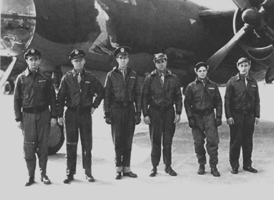bug found in software // servers are falling like leaves // full access not fine
Monthly Archives: November 2011
Kenya Enters War with Somalia
I watched in quiet as news started to emerge from Kenya in October that they had deployed forces into Somalia. Not a single American news source that I follow reported the start of a war. Instead I read Asian and African threads.
At first I thought the invasion was predictable, given the role the Americans have played lately in Ethiopia’s push eastward from the Ogaden. Why not push Kenya to do the same? This looked like a page straight out of the book of American proxy wars in Africa. The Economist eventually ran a report that said it better than anyone:
The Americans claim that the offensive took them by surprise. That is hard to believe, especially since several of the missiles fired at jihadist fighters hidden in the mangrove swamps on the Somali side of the border seem to have been fired from American drones or submarines.
The Economist tries to make a case that such an offensive will be a economic/market gamble. Their analysis makes little sense to me. I suspect a large offer was on the table from Kenyan allies (e.g. America, China, Norway) that more than offsets the marginal impact to trade/commerce in the region already weakened by conflict and drought.
Then I wondered if the offensive was more than just an effort to put more regional pressure on Somalia. Perhaps it is meant to push forward into a position from the Kenyan border that could offer easier/faster access for American-backed intel operations specifically targeting al Shabab.
Of course, regardless of American objectives, Kenya may be fighting for Kenyan interests (i.e. reduce the refugee flow, block terrorism, stabilize the border, extend coastal access). Daniel Branch suggests that the Kenyan offensive is mainly domestically motivated.
But this case for war is less than convincing, as it is difficult to argue that the threat from al Shabaab is substantially worse than it has been in years past. Kenyan troops have armed, trained, and organized proxy forces to fight al Shabaab on the border since at least 2009, albeit to no great effect. For at least three years, al Shabaab has threatened armed attacks on Kenya; cross-border raids by al Shabaab fighters have been a fact of life in northeastern Kenya for some time.
In fact, by some estimates, the overall threat from al Shabaab has declined in recent months: the UN’s envoy to Somalia said in August that Ugandan and Burundian peacekeepers had actually weakened the al Qaeda-affiliated militants. Nairobi’s incursion into Somalia was spurred less by the threat of al Shabaab and more by domestic military and political dynamics.
That could be the case if Kenya was the one judging the risk from al Shabab. But if America’s intelligence officers in Kenya are offering an opinion then Branch’s argument doesn’t hold as much weight. America wants to control the Somali theater; a threat to Kenya from al Shabab is not the only test.
More to the point, Kenya is showing signs of significant investment in physical and logical security. USAID has announced an interesting partnership to drive a cybersecurity and incident response plan for the country.
[Information and Communication PS, Bitange] Ndemo, who was speaking during the National CIRT (Computer Incident Response Team) Capacity Building Workshop, said the Master Plan in conjunction with the USAID seeks to establish a Public Key Infrastructure (PKI) framework.
“We should finish in the next three months before we begin implementation of the PKI which creates virtual identities, which creates more trust in the internet, more than we have right now,†he said.
The Master Plan will include the development of information security management controls and procedures, cybersecurity systems, and identity and access management systems.
The government has already undertaken initiatives to enhance its digital capacity including the launch of the Kenya Computer Incident Response Team (KE-CIRT) earlier this year and the soon to be finalized National Data Centre.
The Data Protection Bill meant to provide a framework for handling citizen personal information is also in the works.
“For the first time e-government has a division to take care of the issue of information security. We have also created a common gateway protection for government traffic, so firewalls have been installed at Herufi House and the government data center,†said Katherine Getao, ICT Secretary of the Directorate of E-Government.
This could be the kind of investment I mentioned above, an offer to offset the potential market impact of the conflict with Somalia. Kenya appears to be stabilizing commerce domestically as well as establishing a foundation for regional growth. The fact that their offensive also serves American foreign policy interests, and is subsidized by US aid, should prompt more analysis of what success is supposed to look like and for whom. It appears to be a monumental shift in policy from the prior American administration.
This Day in History 1944: the 584th Squadron of the 394th Bomb Group
An American “Martin Marauder” in the 584th Squadron of the 394th Bomb Group — the “Bridge Busters” — was shot down over France on this day in 1944 during mission #148.
Captain Harper and his crew were flying in the lead position of the second box of the formation bombing Neuweid, Germany when their B26 received a direct hit from anti aircraft fire, burst into flames and crashed. No parachutes were observed by other crews, but Sgt Howard Mote was later reported as a POW, the rest of the crew were killed.
- Captain Lawrence P. Harper – Zachary Taylor National Cemetery
1/Lt William Andrews – Zachary Taylor National Cemetery
1/Lt Paul Stephens – Arlington National Cemetery
1/Lt James Harrison – American Cemetery in the Netherlands
2/Lt Kenneth Wolf – Zachary Taylor National Cemetery
T/Sgt James Kelly,Jr. – Zachary Taylor National Cemetery
S/Sgt Stuart Ottenheimer (second from right above – born August 7, 1922) – Zachary Taylor National Cemetery (Section E Plot 169-170)
Sgt Ralph Pagano – Zachary Taylor National Cemetery
Some interesting B-26 footage can be seen in this collection of propaganda films called Martin Marauder in Action
The B-26 had a very high rate of accidents in takeoff and landing until crews were trained better and (perhaps more importantly) an aspect ratio design was modified on its wings/rudder.
The following United States War Office Official Training Film 1-3301 How to Fly the B-26 Airplane was for pilots who had to fly what unofficially became known as the “Widowmaker”. Note that the lead character says
Life Begins With a Checklist…and it May End if You Don’t Use It
Fuzz and the NeXT Computer
For some reason I have been hearing a lot of reminiscing lately about the NeXT Computer. Perhaps it is the unfortunate passing of Steve Jobs at an early age that has led people to have fond memories of his various projects and companies.
Two things stand out in my mind when I think of NeXT.
First, my college chemistry department had a lab of them but they were rarely used. For those who owned their own Amiga, far more powerful and capable computers, there was no comparison. BeOS (also started by an ex-Apple executive, Jean-Louis Gassee) was a better comparison to the Amiga due to more advanced multi-media that has become the hallmark of Apple. It lost out to NeXT in an acquisition decision by Apple and then seemed to disappear, but I digress.
The donated NeXT Slabs sat in the lab, more aesthetically pleasing than everything else, much like Apple products are today, but that did not make them popular. They were fine as network terminals but the physical looks of a terminal back then did not compensate enough to draw anyone to them.
And that’s a good segue to the second thing I remember. The fuzz analysis done by Barton Miller roasted the security of NeXT Computer.
Here’s a slide from his presentation called Fuzz Revisited in 1995, a follow-up to a 1990 fuzzing test, that shows up to 43% of utilities crashed on commercial UNIX.
43% is actually the NeXT. Ouch, now that’s what I call fuzzy memories. The other flavors you see listed in the slide above averaged about half as many security failures.



